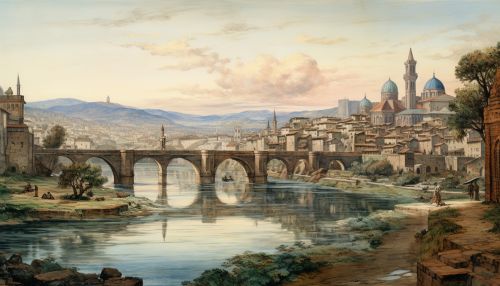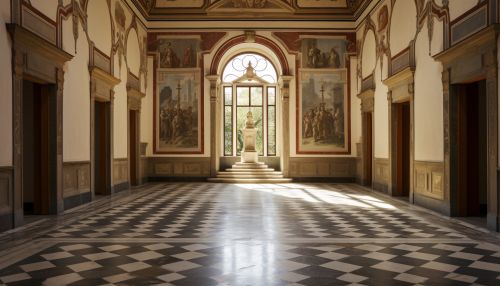Filippo Brunelleschi
Early Life
Filippo Brunelleschi was born in 1377 in Florence, Italy. His father was a notary, a position of considerable respect and financial stability. Brunelleschi was the middle of three sons. His family was well-off, allowing him to receive a comprehensive education. He was trained as a goldsmith and sculptor in the workshop of a local master, where he developed a keen interest in the arts and mechanics.


Career
Brunelleschi's career began in the field of goldsmithing. However, his interests soon shifted towards architecture, particularly after witnessing the competition for the second set of bronze doors for the Baptistery of Florence. Although he participated in the competition, he did not win. This event, however, sparked his interest in architectural design and engineering, leading him to study the ruins of Rome, where he gained a deep understanding of Roman architectural and engineering principles.
His most renowned work is the dome of the Cathedral of Santa Maria del Fiore in Florence, also known as the Duomo. This architectural marvel, completed in 1436, is considered a masterpiece of design and engineering and is still the largest masonry dome in the world. Brunelleschi's innovative use of a double shell, supported by a sophisticated system of ribs and arches, was unprecedented.
Brunelleschi also made significant contributions to linear perspective, a method of depicting space in two-dimensional art, which had a profound impact on Renaissance painting and sculpture. His experiments with perspective were documented in his treatise "De pictura" (On Painting), which influenced many artists of the time, including Leonardo and Raphael.
Later Life and Death
In his later years, Brunelleschi continued to work on various architectural projects in Florence, including the Pazzi Chapel and the Old Sacristy of San Lorenzo. He remained active until his death in 1446. His tomb is located in the crypt of the Cathedral of Santa Maria del Fiore, a testament to his significant contributions to the city of Florence and the field of architecture.


Legacy
Brunelleschi's innovative architectural designs and engineering solutions had a profound influence on subsequent generations of architects and engineers. His work on the dome of the Florence Cathedral revolutionized dome construction and remains a testament to his genius. His development of linear perspective also had a significant impact on the visual arts, influencing the way space and depth are depicted in two-dimensional works.
